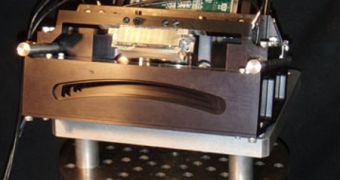The next-generation of Earth-observing satellites is currently in the making, and NASA is spearheading the effort. As part of it, the agency flew its first test of a new instrument, that will go on a spacecraft destined to measure the impacts of aerosols and clouds on global warming.
The test flight was coordinated by researchers at the space agency's Jet Propulsion Laboratory (JPL), in Pasadena, California and the College of Optical Sciences, at the University of Arizona in Tucson.
They investigated the performances of a prototype science instrument that will go on future satellites under real-life, flight conditions. The device passed its assessments with flying colors.
The new instrument is designed as a new and improved version of a scientific tool already on board the NASA's Terra spacecraft, the Multi-angle Imaging SpectroRadiometer (MISR).
JPL experts developed the Terra instrument as well, and now they are improving the field again, with their multi-directional multi-wavelength, high-accuracy polarization camera.
The instrument, which is called Multiangle SpectroPolarimetric Imager (MSPI), is a candidate for inclusion in the science suite that will fly aboard NASA's future Aerosol-Cloud-Ecosystem (ACE) mission.
in its 2007 Earth Sciences Decadal Survey, the National Research Council (NRC) suggested that NASA should build ACE as an Earth observations satellite.
“ACE mission objectives include characterizing the role of aerosols in changing Earth's energy balance (the balance between incoming solar energy and outgoing heat from Earth), especially their impact on precipitation and cloud formation,” JPL experts reveal in a press release.
The MSPI could play a pivotal role in these investigations, as proven by the recent test flight. The maneuver took place at the NASA Dryden Aircraft Operations Facility, in Palmdale, California, on October 7.
“AirMISR had four spectral bands; AirMSPI has eight, and three of them are polarimetric. This additional capability will provide greater sensitivity to aerosol optical and microphysical properties,” explains David J. Diner.
“The addition of more spectral bands and polarimetry helps pin down the particle properties better,” adds the expert, who is the main investigator of the new instrument at JPL.
“Intensity and polarization imagery from the checkout flight look very good, so all indications are that the camera is working very well,” he goes on to say.
“The camera is mounted in a rotating drum which orients it at a pre-programmed set of pointing angles using a motor, and the multi-angular views also help in studying aerosols,” Diner concludes.

 14 DAY TRIAL //
14 DAY TRIAL //